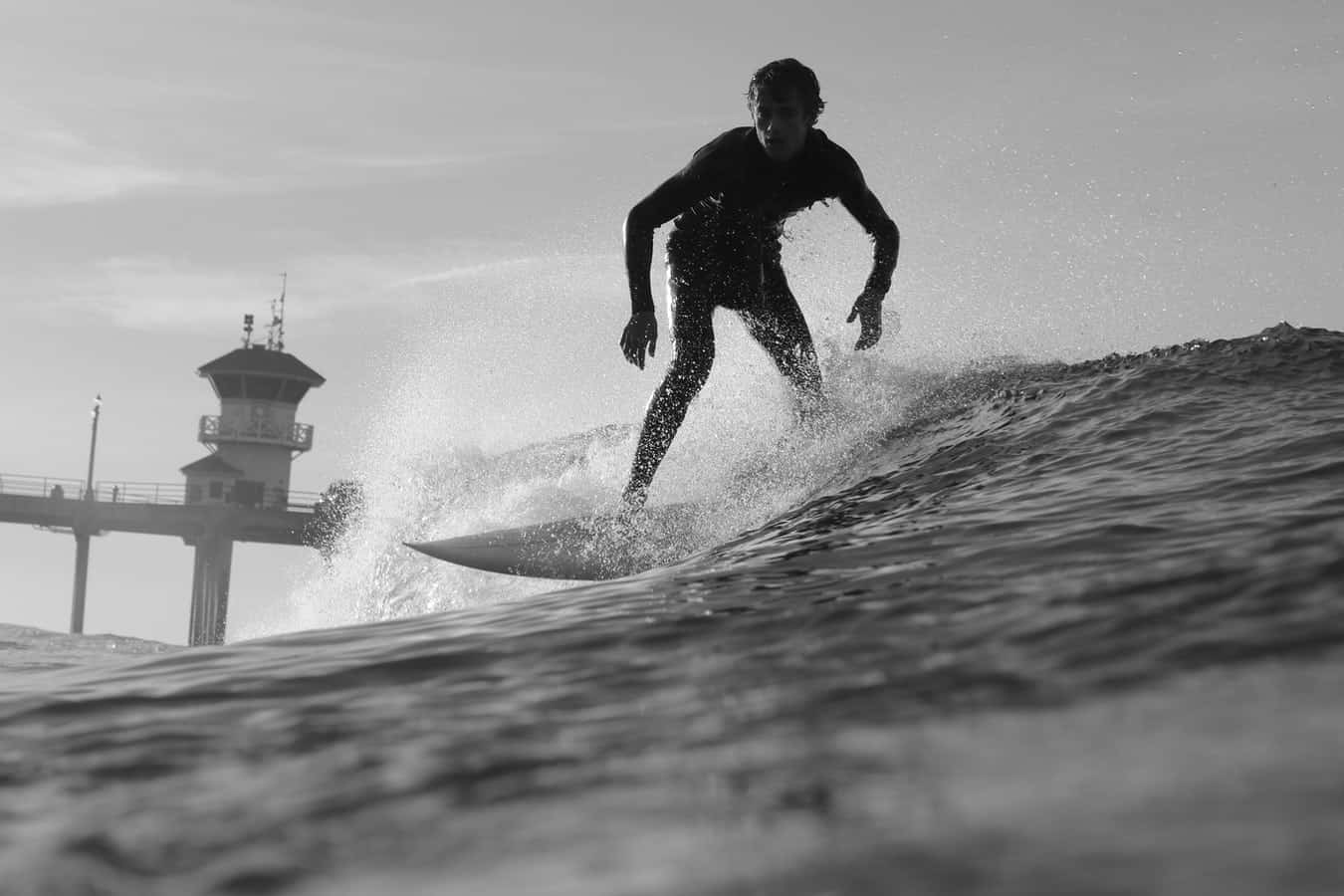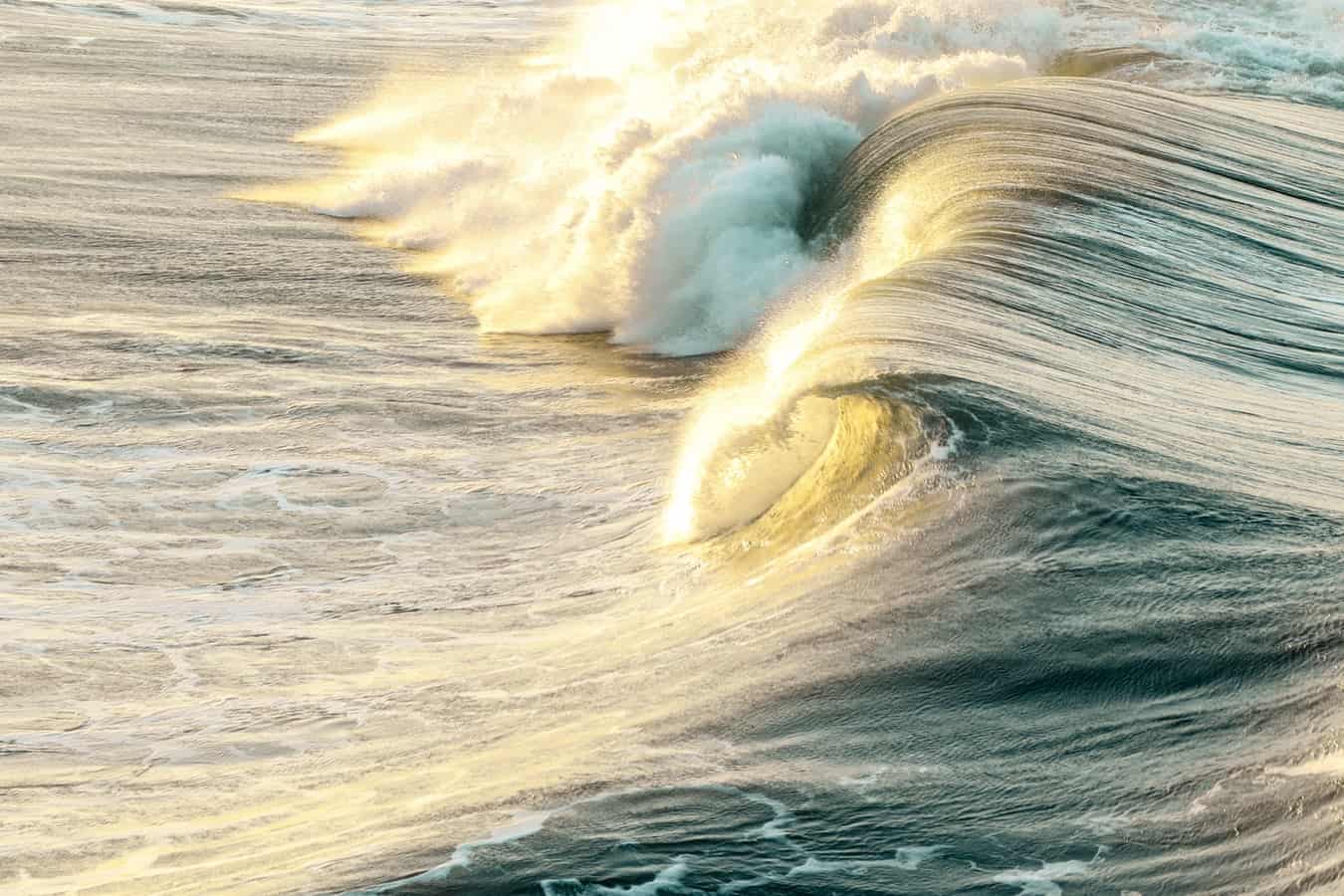The ocean is definitely finicky when it comes to waves. If you’re a longtime surfer you’re familiar with that.
If you’re new to surfing, it’s probably one of the first things you realized out on the water. The surf report can change everyday, even multiple times in the day.
It can be frustrating when you really want to surf but it seems like there aren’t any good waves.
But what makes a good wave anyway, and how big do waves need to be to surf? Can you surf two foot waves? While you may prefer bigger waves over smaller, you can absolutely surf 2 foot waves. Although 2 foot waves may sound tiny, they’re perfectly surfable.
In fact, what’s called a 2 footer may technically be 3 or 4 feet due to the way surfers measure wave height. It depends on if the surfer is measuring the face of the wave, or the back of the wave etc.
Small waves are great for beginners to learn on and also great practice for more advanced surfers.
A smaller wave will have less force behind it making it great to strengthen your paddling ability. While big waves do a lot of the work to pull you onto the wave, you have to paddle much harder to catch small waves.
They also take more energy to keep the wave, requiring you to pump harder down the wave.
Small waves do better with different boards than big waves. You’ll find it more enjoyable if you use a board with greater volume, such as a longboard or foamboard.
If you don’t use a longboard, you can still ride small surf but it takes a little more technique. This can be a fun challenge in your surfing ability.
Small surf is actually more common than big surf in most places, so it’s important to know how to ride. If you’re just waiting for huge swells, you may not get out much.
Part of what will make you a great surfer is practice, so learning to ride all types of waves is important.
In addition to size, all waves are not created equally. Things like wind, swell and where the waves break all matter in terms of creating surf.
Measuring Wave Height
When it comes to measuring wave height, there are a few different ways to go about it. The Hawaiian Scale, the Bascom Method and Body Measurements.
Depending on your location or preference dictates what method you use. Since there’s multiple ways to measure, you should make sure you know how someone is determining wave height when talking about the surf.
Hawaiian Scale
The Hawaiian Scale is a form of measuring waves using the back of the wave to determine height.
Developed, obviously, in Hawaii, this way of measuring tends to underestimate how big a wave really is. A 2 foot wave using the Hawaiian Scale may really be a 4 – 5 foot wave.
This method isn’t very popular outside of Hawaii.
Bascom Method
This version of measuring wave height works by measuring from the trough, or lowest point of the wave, all the way up to the peak.
Developed by Willard Newell Bascom, it’s the opposite of the Hawaiian Scale and often seen as an overestimation since the trough goes down below the horizon line.
Surfable Wave Method
This style strikes a balance between the Hawaiian Scale and the Bascom Method. The Surfable Wave Method is determined by measuring the face of the wave, or the part that a surfer actually rides.
Body Height Method
While not a formal way of measuring waves, this method is an easily identifiable and common method.
With the body height method, waves are labelled as ankle high, knee high etc up to overhead and double overhead.
It’s not entirely accurate as all surfers are different heights, but is generally based on a 6 foot tall surfer. This is probably the easiest way to communicate wave height in an informal setting.

How Waves Form
Waves are formed in several ways.
The most common way is by wind. Referred to as surface waves, these are created by the wind blowing over the surface of the water.
The wave is made by the friction between the force of the wind against the surface of the water.
Waves are also made by the gravitational pull of the sun and the moon, called tidal waves. Tidal waves are not to be confused with tsunamis which are caused by underwater disturbances like earthquakes and volcanic eruptions.
Most waves surfers ride are created by the wind.
Three factors come into play in creating a wave. Wind velocity, fetch and duration.
Wind velocity is the speed of the wind. Fetch Is the distance the wind can blow over the water uninterrupted. And duration is how much time the wind blows over that water.
These three factors are almost like puzzle pieces that fit together in creating waves. The greater the velocity, fetch and duration, the greater the waves.
However if you have little speed, but great fetch and duration, you’ll still end up with small waves.
Storm energy creates the best waves for surfing as it drums up the most wind energy along with a travelling fetch as a storm moves over the ocean.
This results in waves that travel a long distance, picking up energy as they go.
Swells
After the wind creates the energy to make waves, these waves travel over the water and organize themselves into sets. This process is referred to as the swell and there are two types, groundswell and windswell.
Groundswell
Groundswell is when waves are created far offshore by storms or strong wind velocity blowing over a long distance.
These waves move through the ocean picking up speed and power as they roll over the ground.
Groundswell waves tend to be much cleaner and more powerful than their counterpart due to the distance they travel. This type of swell can travel over 2,000 miles.
They’re also characterized as having a greater wave period between them. A groundswell period can be 10 – 20 seconds.
The best and most desireable from a surfing perspective are groundswell.
Windswell
Windswell is when waves are created closer to shore. These localized winds tend to produce choppier, more unstable waves since they have less distance to travel than groundswell.
They also tend to be created by onshore winds. Windswell is characterized by shorter wave periods, less than 10 seconds.
Since these waves are less powerful and much messier, they’re less suitable for surfing than groundswell.
Breaks
In addition to swells, the break where you surf creates totally different types of waves. After the swell travels over the ocean, the topography of the seafloor at your surf spot begins to change.
This causes the waves to start to break, thus the term surf break. There are four main types of breaks, the beach break, reef break, point break and river break.
Beach Break
A beach break is when the waves are breaking over sand and are the most common.
Since the sand is always moving and changing under the water, it creates very different waves from week to week or even day to day, depending on the beach.
Some beach breaks create powerful, hollow waves, while others are known for long, gentle waves. Beach breaks are generally seen as the best place for beginners.
Reef Break
Reef breaks are when the waves come in over a rocky seafloor or, out in the tropics, a coral reef.
Since the topography is fixed, the waves only change dependent on the swell and wind direction. Most big wave surfing spots are reef breaks.
When the energy of the wave rolling in hits the rocks, it creates strong, powerful waves. Reef breaks can be dangerous for beginners, largely due to the rocks.
It’s much easier to be injured by the rocks and reef at these spots making them more suited for intermediate to advanced surfers.
Point Break
A point break is when the swell hits land that is perpendicular to the shore, like a jetty or peninsula. Breaking over rock or sand, these waves peel out on either side of the land formation.
These spots are known to create much longer waves than beach or reef breaks. Some point breaks create intense, powerful waves, while others offer more gentle rolling waves.
River Break
This is the least common break amongst the ones listed, but still important to at least know. River breaks happen either due to the topography of the river bed or when fast moving water slows due to the water downstream.
While an unusual spot for surfing, there are a few popular river breaks in Germany, Wyoming and Oregon.
Anatomy of a Wave
Now that you know all the different kinds of waves and where they are, it’s important to know the parts of the wave you’ll be riding.
Peak
The peak is the highest point of the wave just where it begins to crest. It’s the best point to take off from. Being able to identify the peak is essential in predicting and reading how a wave will break.
Trough
This is the lowest part of a wave. Wave height is often measured from this point up to the peak.
Lip
The lip is the top part of the wave just as it begins to fold over and crest. It’s also where the power stems from.
Shoulder
The shoulder is the flat, calmer section of the wave behind the peak and away from where the wave is cresting.
Face/Wall
The face, also known as the wall of a wave is the steep, unbroken section. This is where most riders surf.
Tube/Barrel
The tube or barrel is the hollow section where the wave has crested. Not all waves create big barrels but when they do it’s the most desired section to ride in.
Pocket/Curl
This is the concave section of the wave. Usually very steep, it’s the area just before the barrel.
Whitewater
The foamy part of a wave that’s already crested.
Related Questions
What Is the Best Board For Beginners?
The bigger the board, the more volume it has. The volume keeps you and the board afloat. The length of the board helps provide balance.
In general, beginners should go for longboards made of foam, usually something over 7 feet.
These help while you’re learning to pop up and stay up as well as being softer when you’re inevitably hit by your board after a wipeout.
Do You Need a Wetsuit to Surf?
Wetsuits are designed to keep you warm in cold water. They aren’t mandatory to surf in and depend on the temperature of the water.
If you’re surfing in Hawaii in the summer, you definitely don’t need a wetsuit. However, if you’re checking out Northern California during the winter, you should suit up to keep from freezing.

